Home »
Misc »
How to rotate steel belted radial tires
How to rotate steel belted radial tires
Tire Rotation 101 - Tire Alignment, Balance, & Rotation
Home > Company > Tire Safety > Maintaining Tires > Tire Rotation
Even Treadwear and Tire Life
Even if your car is properly aligned, tires still need to be rotated for optimal wear performance and maintenance. Rotation counteracts the uneven wear characteristics of each wheel position on the vehicle. How often should you do it? To maximize tire tread life, follow the recommended rotation schedule in your vehicle owners manual. If there is not a recommendation from the vehicle manufacturer, then rotate your tires every 5,000 to 7,000 miles by taking your car to a trusted tire dealer or automotive service center.
Maintain Proper Alignment
If your car's wheels are out of alignment, your tires will wear unevenly, which can lead to early tire replacement.![]() Also, a car out of alignment could signal other mechanical problems that may affect tire performance. For the best results, choose a shop that uses accurate computer-assisted machines, and ask for a printout of the adjustment angles to keep with your service records.
Also, a car out of alignment could signal other mechanical problems that may affect tire performance. For the best results, choose a shop that uses accurate computer-assisted machines, and ask for a printout of the adjustment angles to keep with your service records.
Check Your Balance
Tires and wheels that are out of balance don't just cause annoying vibration. Uneven tread wear may also result, further reducing your ride comfort and leading to earlier tire replacement. A shop with an electronic spin balancer can help smooth things out.
Front-Wheel Drive and Rear-Wheel Drive Vehicles
Front-wheel drive vehicles place braking, steering and driving forces on the front axle tires. Rear axle tires receive primarily braking forces, resulting in a much faster wear rate for the front axle tires.
Modified Cross Rotation
The "Modified Cross Pattern" can be performed on any front- or rear-wheel drive vehicle equipped with four non-directional tires (directional tires must be rotated front to rear only).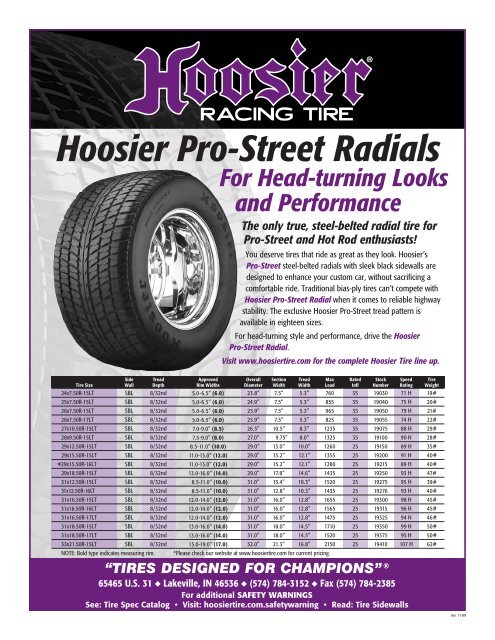 Free rolling axle tires are crossed and installed to the drive axle, while the drive axle tires are brought straight to the free rolling axle (without crossing). Just remember, “cross to drive”.
Free rolling axle tires are crossed and installed to the drive axle, while the drive axle tires are brought straight to the free rolling axle (without crossing). Just remember, “cross to drive”.
Directional treads are designed to perform in the direction denoted on the tire sidewall only. They must always be rotated front to rear — no matter the vehicle they are installed on — so the direction of the rotation does not change.
Watch our Tread Life video to see more rotation patterns.
Notes:
Following rotation, adjust all tires to the vehicle manufacturer’s recommended inflation pressures. Always torque lug nuts or lug bolts to manufacturer’s recommended specification.
Four-Wheel Drive
Vehicles equipped with permanent four-wheel drive and those with "on command" four-wheel drive and driven mainly in four-wheel drive mode are best suited to a four-tire cross rotation. With this pattern, tires from both axles are crossed and installed on the opposing axle.
Straight Rotation
Straight rotation was developed in the early years of radial tires. This rotation method switches the tires front-to-rear but does not cross side to side. This rotation method is used for directional tread patterns.
Five-Tire Rotation
If your spare tire is a matching full size tire (as opposed to a temporary spare) and you want to keep it in rotation, move the spare to the right rear position. Then place the tire that would have gone to the right rear in the spare position.
Six-Tire Rotation (Dually trucks)
If your vehicle has dual rear wheels the rotation pattern looks like two triangles, one on the driver’s side and one on the passenger’s side. For each side, move the outer dual tire to the inner position, the inner dual tire to the steer position and the steer tire to the outer dual position.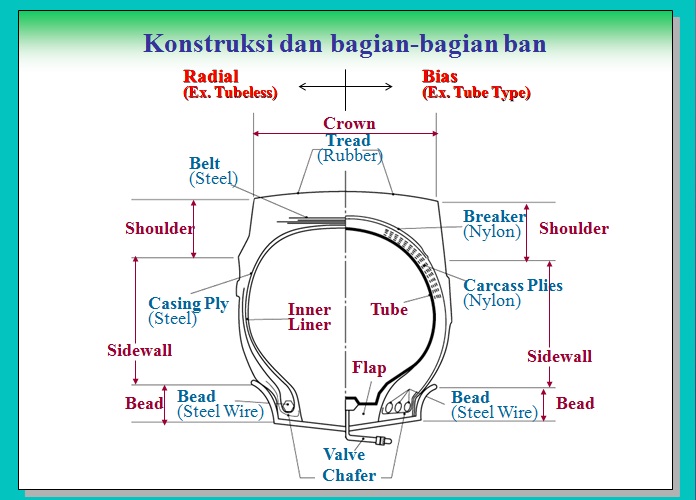
Notes:
Never include a temporary spare tire in the rotation.
Directional tread patterns must be rotated front-to-rear only so the direction of the rotation does not change.
Learn about our mission, our achievements, and our ongoing commitments
Read Our Origin Story
How to Rotate Steel Belted Radial Tires
by Jody L. Campbell
Today, most passenger vehicles and light trucks use steel belted radial tires. Depending on the type of steel belted radial tire you have and the type of vehicle you have, you may find several different ways to rotate your tires that may even conflict with the recommendation of the manufacturer. The key is to rotate them following a strict mileage regimen and follow the same rotation pattern throughout the life of the tires.
Step 1
Locate the owner's manual of your vehicle and look up the manufacturer's recommended method of tire rotation.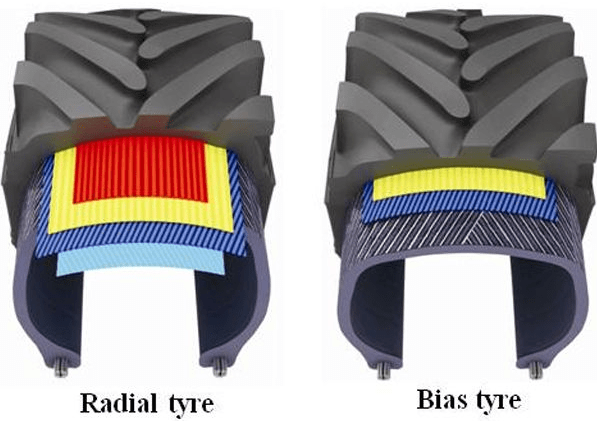 Keep the guide handy for reference.
Keep the guide handy for reference.
Step 2
Park the vehicle on a flat, level paved or concrete surface, apply the parking brake and remove the keys from the ignition.
Step 3
Break the lug nuts loose on all four tires, using the breaking bar and socket.
Step 4
Lift one axle of the vehicle at a time and secure it on jack stands (all four) either under the frame or on the rocker panels.
Step 5
Determine if your steel belted tires have a directional pattern. There will be an arrow or the word "directional" stamped on the sidewall of the tire. You will also be able to see the tread on either side of the tire pointing inward to the center of the tread. If they do, this will dictate or supersede any crisscross-recommended rotation pattern for the tires. You will not be able to crisscross them and will have to rotate them front to back only.
Step 6
Follow the recommended rotation pattern of the tires located in the owner's manual, if applicable. If there is none and the tires are non-directional, you can still choose to rotate them front to rear. That means taking the left front to the left rear and the left rear to the left front. Follow the same pattern on the right side.
If there is none and the tires are non-directional, you can still choose to rotate them front to rear. That means taking the left front to the left rear and the left rear to the left front. Follow the same pattern on the right side.
Step 7
Crisscross the tires on a front-wheel drive vehicle by taking the front tires and moving them straight to the back axle. Then crisscross the left rear tire to the front right and the right rear tire to the left front.
Step 8
Rotate the tires in a crisscross pattern on a rear-wheel, all-wheel or four-wheel drive vehicle by crisscrossing the front tires to the rear axle. In other words, the left front would go to the right rear and the right front would go to the left rear. The rear tires would move straight forward, with the left rear moving to left front and the right rear to right front.
Step 9
Replace the lug nuts and tighten snugly. Lower the vehicle and hand torque the lug nuts with the torque wrench and socket to the recommended torque specifications for your vehicle.
Tips
- Yet another way to rotate rear-wheel, all-wheel and four-wheel drive vehicles is to crisscross all the tires. Go from left front to right rear, right front to left rear, left rear to right front, and right rear to left front. The type of rotation is up to the driver and what his personal taste is. Some people (and tire manufacturers) do not recommend crossing the belt of a tire in a rotation procedure (meaning no crisscrossing at all and only rotating front to rear no matter what kind of vehicle). The most important thing to remember is to rotate (in any pattern) your tires every 6,000 (for four-wheel or all-wheel drive vehicles) miles or 9,000 (for two-wheel drive vehicles) miles and you will get the most life out of the tires.
Things You'll Need
- Floor jack
- 4 Jack stands
- 1/2-inch drive breaking bar
- 1/2-inch drive socket (to fit lug nuts)
- 1/2-inch drive adjustable torque wrench (recommended)
Writer Bio
Jody L. Campbell spent over 15 years as both a manager and an under-car specialist in the automotive repair industry. Prior to that, he managed two different restaurants for over 15 years. Campbell began his professional writing career in 2004 with the publication of his first book.
Campbell spent over 15 years as both a manager and an under-car specialist in the automotive repair industry. Prior to that, he managed two different restaurants for over 15 years. Campbell began his professional writing career in 2004 with the publication of his first book.
More Articles
How to rotate steel belts radial tires
Today, most passenger cars and light trucks use radial tires with a steel belt. Depending on the type of steel tape radial tire you have and the type of vehicle, you may find several different ways to turn your tires that may even go against the manufacturer's recommendations. The key is to rotate them according to a strict mileage regime and follow the same rotation pattern for the life of the tires.
Content
- 0.1 How To Rotate Steel Belts Radial Tires
- 1 Step 1
- 2 Step 2
- 3 Step 3
- 4 Step 4
- 5 Step 5
- 6 Step 6
- 7 Step 7
- 8 Step 8
- 9 Tips
- 10 Items you will need
How to rotate steel belts radial tires
Step 1
Find your vehicle's owner's manual and find the manufacturer's recommended tire rotation method. Keep the manual handy for your reference.
Keep the manual handy for your reference.
Step 2
Park the vehicle on a flat, level or concrete surface, apply the parking brake, and remove the keys from the ignition.
Step 3
Loosen the lug nuts on all four bars using a break bar and socket.
Step 4
Raise one axle of the vehicle at a time and secure it to the jack stands (all four) either under the frame or on the rocker arms.
Step 5
Determine if your tires with steel belts are directional. An arrow or the word "directional" will be printed on the sidewall of the tire. You will also be able to see the tread on both sides of the tire, pointing inward towards the center of the tread. If they do, it will dictate or supersede any recommended cross-spin pattern for tires. You won't be able to cross them, and you'll only have to rotate them from front to back.
Step 6
Follow the recommended tire rotation pattern in the owner's manual, if applicable.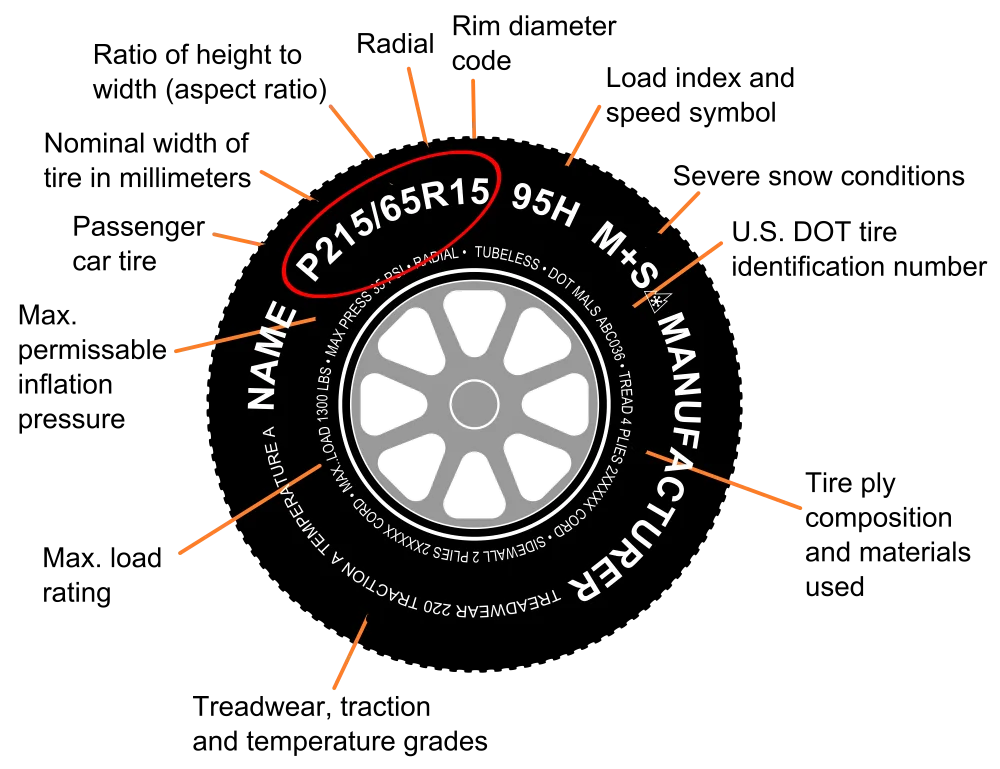 If it's not there and the tires are non-directional, you can still turn them from front to back. That means left front left rear and left rear left front. Follow the same pattern on the right side.
If it's not there and the tires are non-directional, you can still turn them from front to back. That means left front left rear and left rear left front. Follow the same pattern on the right side.
Step 7
Cross the tires on a front wheel drive car by taking the front wheels and moving them straight onto the rear axle. Then turn the left rear wheel in front to the right, and the right rear wheel in the left front.
Step 8
Rotate the tires in a criss-cross pattern on a rear wheel drive, 4 wheel drive or 4 wheel drive vehicle by crossing the front wheels with the rear axle. In other words, the left front will point to the right and the right will point to the left. The rear tires will move straight ahead, the left rear will move left forward and the right rear will move right front.
Replace mounting nuts and tighten securely. Lower the vehicle and tighten the lock nuts with a torque wrench and socket to the recommended torque values for your vehicle.
Tip
- Another way to turn rear wheel drive, 4 wheel drive and 4 wheel drive vehicles is to cross all tires. Go left to right, back to back, right to front, left to back, left to back, right to right, and right to back, left to front. The type of rotation depends on the driver and his personal taste. Some people (and tire manufacturers) do not recommend crossing the tire belt during the rotation procedure (i.e. not crossing at all, but only rotating from front to back regardless of vehicle type). The most important thing to remember is to rotate (in any order) your tires every 6,000 (for AWD or 4WD) miles or 9000 (4WD) miles and you'll get the most out of your tires.
Items you will need
- Paul Jack
- 4 rack jack
- 1/2 inch disc breaking disc
- 1/2" drive slot
- 1/2" adjustable torque wrench (recommended)
Instructions and tips for consumers
- When changing a tire, also use a new inner tube.
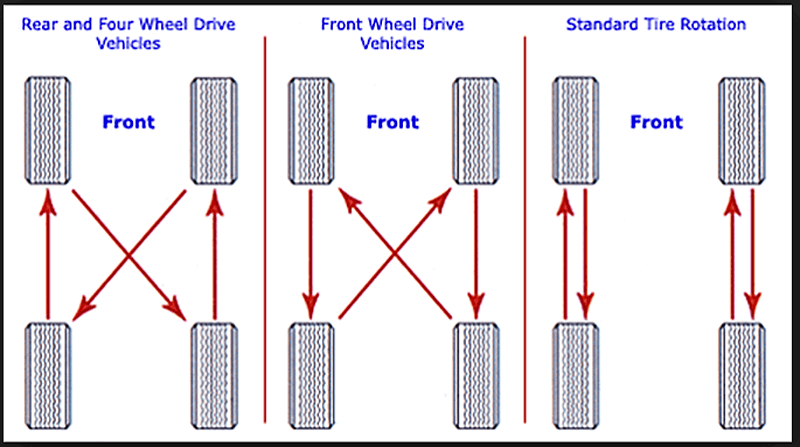
- Make sure the discs are clean and in good condition.
- Check the condition of the rim and rim tape and replace the rim tape if necessary.
- Inflate the bladder slightly.
- Install the tire according to the TRAVEL direction marking on the sidewall.
- Install the tire using the special tool (finish at the valve). Use a special emulsion to simplify the installation procedure.
- Inflate the tire to 3.5 bar and check the position of the tire bead and tube. If the position is incorrect, deflate the tube and correct the position of the tube and tire bead. Re-inflate the inner tube until the tire bead is in the correct position on the rim.
- Adjust the tire pressure to the value specified by the motorcycle manufacturer.
Removal procedure:
- Unscrew the nipple and completely deflate the tire.
- Remove both tire beads from the rim.
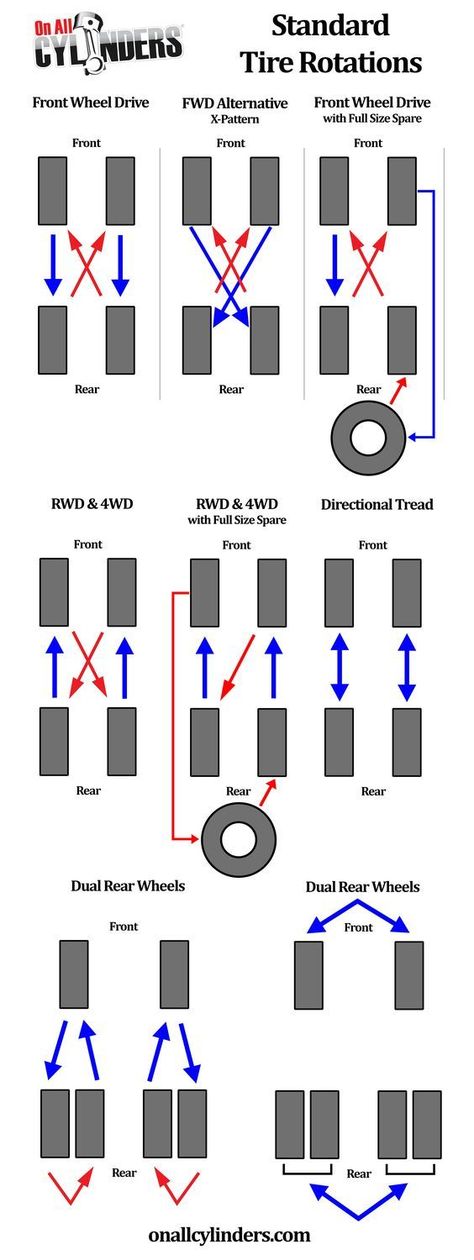
- Using the special tool, remove the tire from the rim.
TUBELESS TIRES
Installation procedure:
- Replace the valve when you change the tire.
- Make sure the discs are clean and in good condition.
- Apply special emulsion to the rim and bead of the tire.
- Install the tire according to the TRAVEL direction marking on the sidewall.
- Install the tire using the special tool (finish at the valve).
- Inflate the tire until the tire bead fits correctly into the rim seat (it should slide over the edge of the tubeless tire on the rim) and continue to inflate the tire to 3.5 bar to ensure the tire is firmly seated on the rim. (It is recommended to inflate the tire without a nipple).
- Adjust the tire pressure to the value specified by the motorcycle manufacturer.
Removal procedure:
- Follow procedure for tube tires.
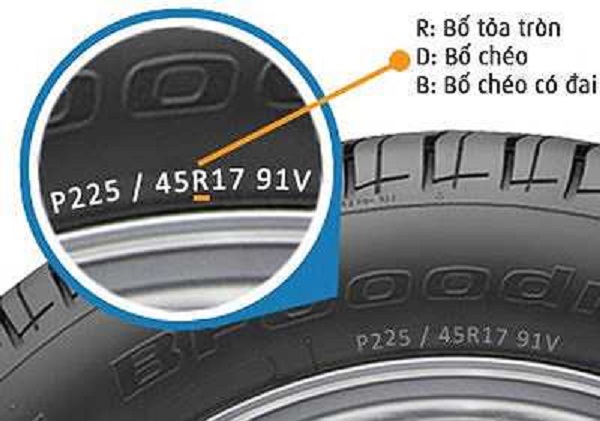
STORAGE INSTRUCTIONS
- Stored tires must not be loaded, compressed or stretched as this may permanently deform the tire.
- In case of short-term storage (up to 4 weeks), tires can be stored in a horizontal position, one on top of the other up to 1.5 m high, but only if there is a lining between the tires, for example, made of cardboard.
- For longer storage periods, tires should be stored upright and rotated slightly once a month.
- Store tires below 25°C, preferably below 15°C. At higher temperatures, there is a higher chance of deformation. Avoid direct contact with heat, radiators and hot pipes. Low temperatures can adversely affect tires. Cold tires must be warmed up to 25°C before use.
- Store tires indoors without ozone (away from electric motors and other electrical equipment that can cause sparks and other discharges that can cause or increase the concentration of ozone in the space), and in places without high concentrations of oxygen and the presence of chemicals such as as fuels, lubricants, chemicals, acids or disinfectants.
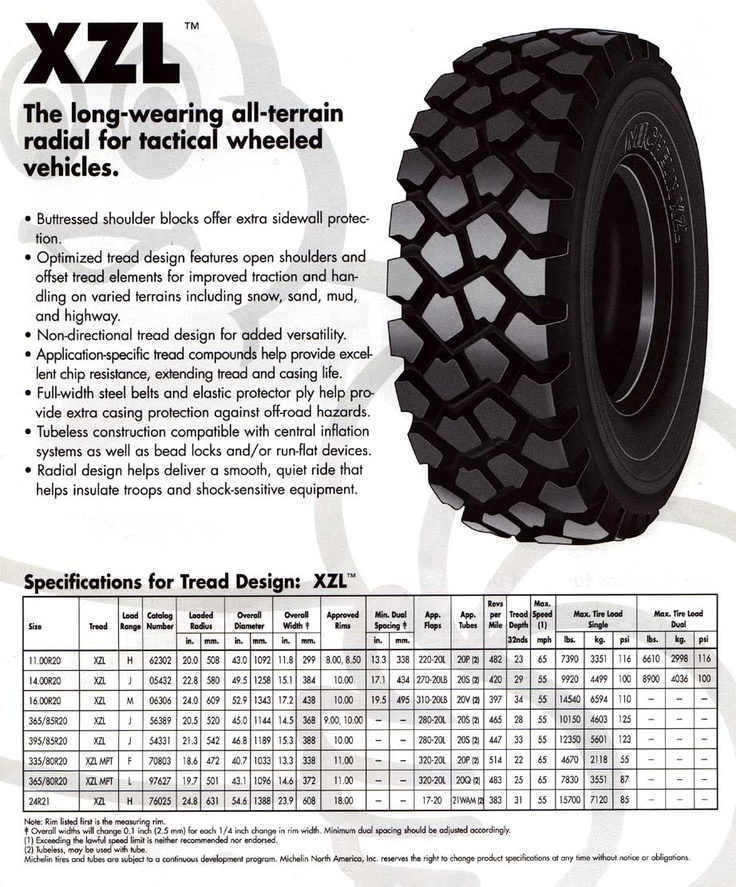
- Keep tires away from sharp objects that could damage the rubber surface (sharp metal parts, wood parts or other sharp objects.
COLORED TIRES
- When storing colored tires, the general storage conditions must be observed. In addition, be aware that the colored sidewall is extremely sensitive to dirt and direct sunlight, so the tires should be wrapped in foil and stored in a dark place.
Further instructions, tips and technical information
Tire service
Internal pressure
- It is extremely important to maintain the set internal pressure of the tire. Driving with under-inflated tires can be extremely dangerous. If the tires are under-inflated, the temperature in them rises, which can lead to sudden tire damage. Tire pressure can further determine tire life. Proper internal pressure ensures maximum driving distance as well as stability, driving comfort and traction.
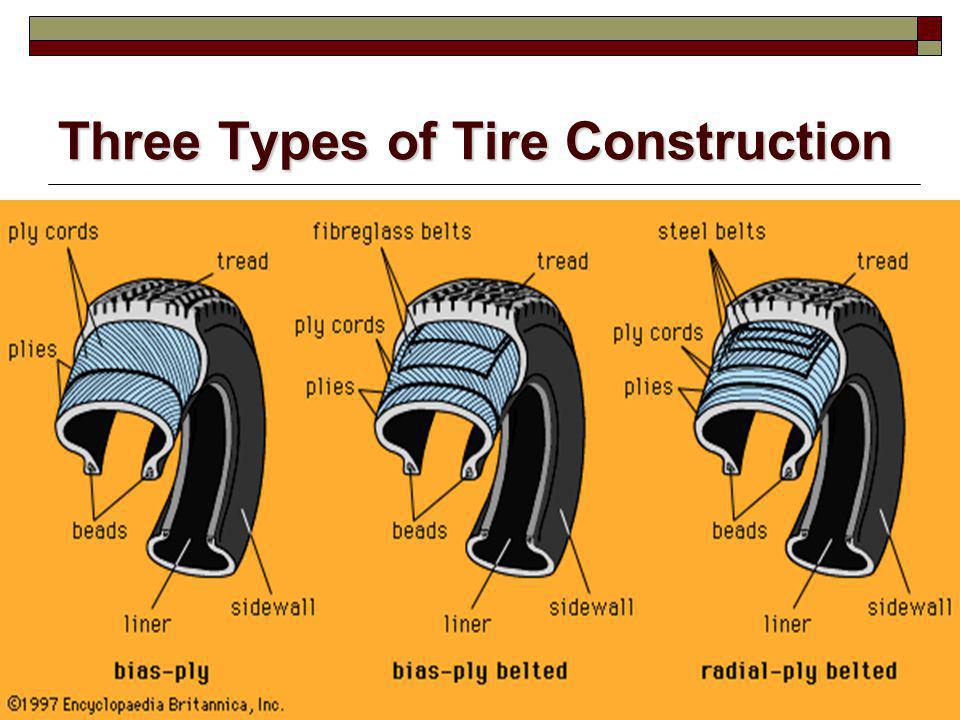 Tire pressure maintains the shape of the tire. Insufficient pressure or improper installation will accelerate tire wear and put additional stress on the tire carcass. Excessively high pressure can cause tire wear at the center of the tire tread and increase the likelihood of cracks in the tire tread.
Tire pressure maintains the shape of the tire. Insufficient pressure or improper installation will accelerate tire wear and put additional stress on the tire carcass. Excessively high pressure can cause tire wear at the center of the tire tread and increase the likelihood of cracks in the tire tread. - Inflate tires to the correct amount specified in the motorcycle owner's manual.
- Maintain the indicated pressure as the minimum tire pressure (when the tires are cold). If you drive fast, increase the pressure by 0.2 bar; when driving with a lot of luggage, increase the rear tire pressure by 0.2 bar.
- If the tire is hot, maintain tire pressure and raise it 0.2-0.3 bar above the prescribed pressure (when the tire is cold, maintain the indicated pressure again).
- Using a calibrated pressure gauge, check the tire pressure at least once a week when the tire is cold, and always before a long trip.
- Consider the fact that the pressure increases when the tire is hot and decreases when the tire is cold.
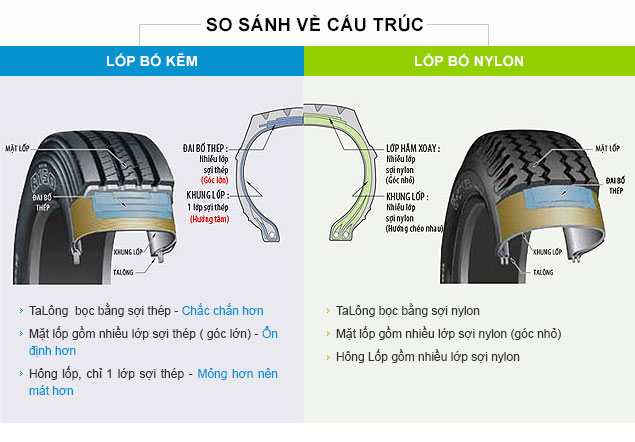 The pressure may also drop if the nipple does not fit or is worn out.
The pressure may also drop if the nipple does not fit or is worn out. - Check the nipple, screw it in or replace if necessary.
- Always install a valve cap (screw tight) that acts as a seal to prevent dust from entering.
- If using tubeless tires, check the valve or replace it when installing a new tire.
- When replacing a tube tire (mounting with a tube), a new tube must be used. During use, the chambers stretch. Reuse of an already stretched and therefore thinner bladder can increase the likelihood of a bladder puncture and a sudden loss of pressure, which can impair vehicle stability and cause falls. When using a Mitas tire, we also recommend using a Mitas tube.
MOTORCYCLE TIRE
- Ensure sufficient distance between the individual parts of the motorcycle (mudguards, forks, transmission chain) and the tire mounted on the rim.
- When driving at higher speeds, the outside dimensions of the tire increase due to centrifugal force.
 The increase can be even greater when using a bias ply tire; therefore do not change the nominal dimensions of the tires.
The increase can be even greater when using a bias ply tire; therefore do not change the nominal dimensions of the tires. - Due to the risk of tire contact with motorcycle parts and uneven wear, make sure that the wheelbase has been adjusted correctly after the transmission chain has worn out.
TIRE AND RIM
- For spoked wheels, the correct rim tape must be used. Check the rim bands regularly as a protruding spoke head can damage the inner tube and puncture it.
- Properly balance the tire on the rim and inspect it regularly. In Slovenia, the legal tread depth is 1 mm (in Germany 1.6 mm) with a tread width of at least 3/4, but we recommend replacing the tire earlier as worn tires are more likely to be damaged and have poorer grip. expensive, especially when driving on wet roads. Damaged tires are very dangerous and should be replaced immediately.
- Remove any stones or nails that have entered the tire tread immediately, as they may pierce the carcass, causing damage and consequently an accident.
 The main advantage of a tubeless tire is that, although it can be pierced by a nail, it cannot experience a sudden drop in pressure. However, if the driver is unaware of the tire damage and continues to drive, the damage may increase and cause a hazard.
The main advantage of a tubeless tire is that, although it can be pierced by a nail, it cannot experience a sudden drop in pressure. However, if the driver is unaware of the tire damage and continues to drive, the damage may increase and cause a hazard. - If the pressure drops, the tire must be removed from the rim and inspected, the cause of the pressure drop must be determined before any repairs are made.
- We strongly discourage shoulder and sidewall repairs.
- In addition, we strongly advise against repairing tires with a speed rating of P or higher.
- We strongly advise against repairing radial tires (on any site).
- A damaged tubeless tire must not be reused.
- A tire may behave differently when in contact with oil or grease, so wipe it with a cloth dampened with gasoline.
- MITAS tires are manufactured with a slight mass imbalance. In order to achieve the ideal balance of tire and rim masses, an additional balancing procedure is required when driving at higher speeds.

- Motorcycles may only be used with rims specified by the vehicle manufacturer. Using the right discs is important for stable riding and other driving characteristics. If the tire is fitted on a rim that is too narrow or too wide, the tire tread shape may change and adversely affect the overall ride characteristics.
TIRE TREAD WEAR
Abnormal tire wear can be caused by various factors:
- Insufficient pressure or overload can deform the surface and cause abnormal wear. This can lead to sudden frame failure due to excessive flexing and sudden pressure drops.
- High speed, hard acceleration and braking.
- Driving surface temperature (higher temperature leads to higher wear).
- Rough running surface (the rougher the surface, the higher the wear and consequently the shorter the service life).
- Mechanical problems such as warped wheels, improper brake adjustment, poor quality shock absorbers, too much clearance between wheel bearings, etc.

- Unbalanced tire rotation mass and rim structure.
- Incorrect adjustment of the rear wheel when replacing or adjusting the transmission chain. Each revolution of an incorrectly adjusted rear wheel causes additional and uneven wear on the tire tread surface
TECHNICAL DATA SHEET
BASIC EXPLANATIONS cars/pickups. MOPED - tires designed for motorcycles that reach speeds of 50 km/h or less. MST - tires for special purpose motorcycles with a wider tread than tires of comparable sizes with the same designation. NHS Motorcycle tires for off-road use. Their use on public roads is not allowed. M+S - tires designed for driving on mud and snow (winter tires). PR - indicates different versions (load rating/tire pressure) of tires with the same size designation. REINF - tires for motorcycles, the load and inflation pressure of which exceeds the standard values..jpg) TUBELESS are tires specially designed to be mounted on suitable rims without the use of a tube. TUBETYPE - tires specially designed for tube mounting.
TUBELESS are tires specially designed to be mounted on suitable rims without the use of a tube. TUBETYPE - tires specially designed for tube mounting.
TIRE PARTS
Since the assembly of the first motorcycle, a hundred years ago, special motorcycle tires have been developed. Tires have evolved over the decades. We have several types of tires that differ both in their basic construction and appearance. Appearance and design depend on the type of motorcycle. Whether it's scooter, enduro or road tyres, they all have the following in common:
- Tire tread - the upper part of the tire in contact with the road surface. The tire's tread pattern and rubber compound provide grip on or off-road, as well as wick water away from the tire. Grip depends on the composition of the rubber. Generally, a tire made from a softer compound has better traction and a shorter life, while a tire made from a harder compound has poorer grip and a longer life.
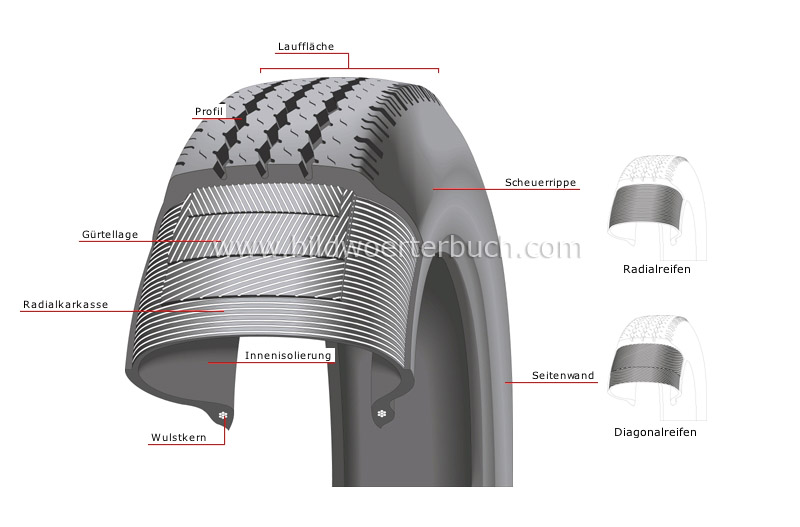
- Sidewall - contains all the important data: speed designation, load index, tire name, manufacturer, country of production, tire homologation number according to ECE and others. During riding, the sidewall transmits lateral forces, limits vibration and prevents tire deformation.
- Carcass (reinforcement) - the bearing part of the tire, it retains its shape regardless of the forces that arise during the ride. It may consist of two or more layers of cord. The cord can be made of viscose, nylon, polyester or kevlar, some parts of the carcass can be reinforced with steel.
- Tire Bead - Provides a tight connection to the rim and prevents tire movement on the rim. It consists of a bead ring and layers of rubberized cord around the bead ring. Thus, the tire acquires the necessary rigidity in the bead area, controls the accelerating and braking forces and transfers them to the suspension. In the case of tubeless tyres, the tire bead prevents loss of internal pressure.
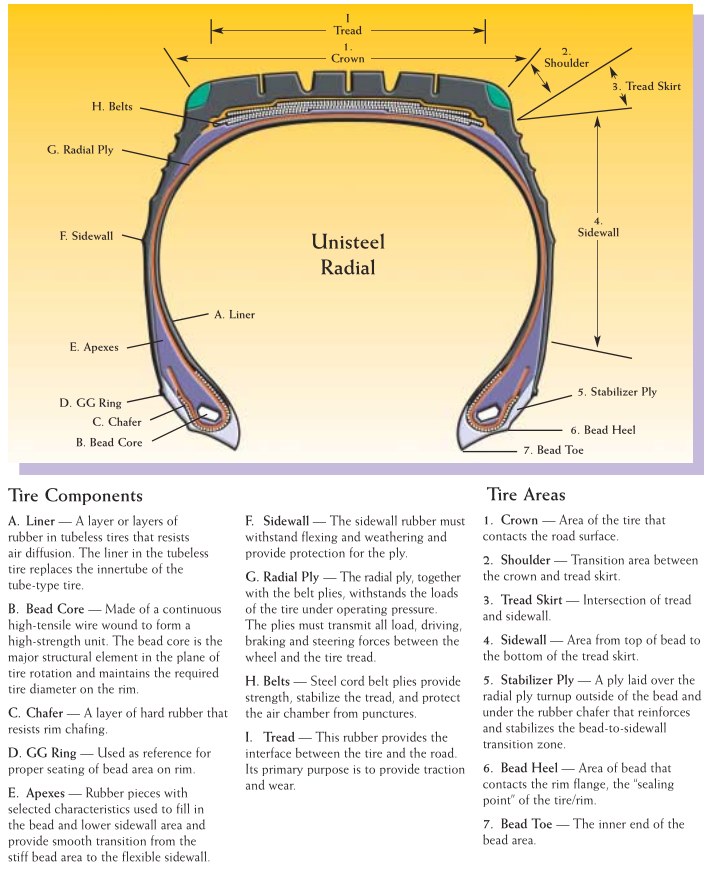
TYPE OF TIRE CONSTRUCTION
By carcass type, tires can be divided into the following categories:
- Bias ply tires are the oldest technology and the most widespread on the market. The carcass of a bias-ply tire consists of two or more layers of textile cord (viscose, nylon, polyester) that intersect at certain angles. Bias tires are the right choice for small motorcycles with smaller engines, scooters and older motorcycles whose chassis is adapted to bias tyres.
- Belted bias ply tires are actually bias ply tires that have a reinforced bias belt under the tread surface. These tires are designated with the letter B (belted tires), for example 130/90B15. These tires are ideal for large-displacement motorcycles that have a chassis that is not adapted to radial ply tires and that need stronger tires.
- Radial ply tires - have a carcass with a ply of cord at an angle of 90° in direction of travel. To stabilize the surface of the tire tread, reinforcing cord belts are superimposed on the carcass.
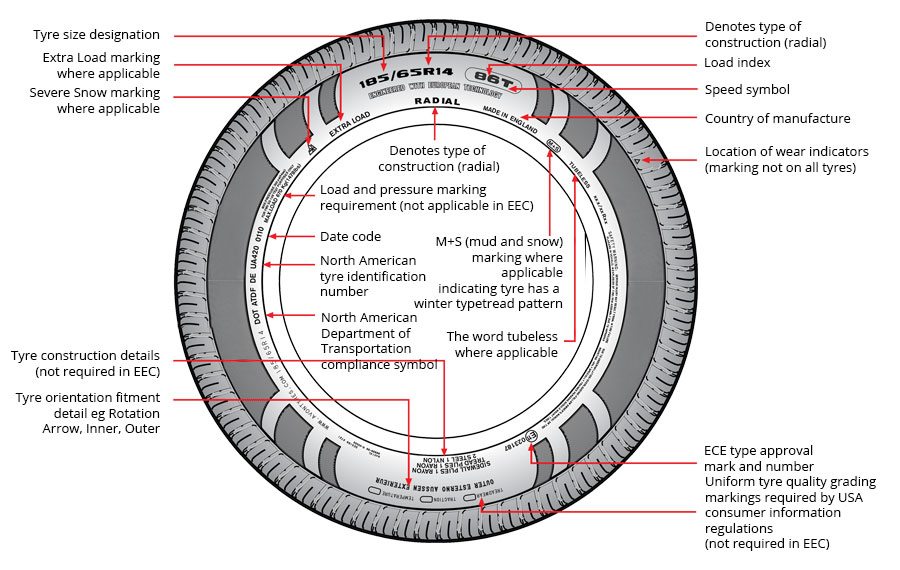 Radial ply tires are the right choice for large displacement motorcycles as they must transfer large forces to the road that increase during acceleration, braking and cornering. Radial ply tires have many advantages, the most important of which is the ability to reach high speeds. Due to the centrifugal force, the temperature in the tire increases, which can damage the tire, reduce traction and increase tread wear. The radial design eliminates almost all the disadvantages of bias-ply tires. The behavior of the tire in extreme conditions has become more predictable.
Radial ply tires are the right choice for large displacement motorcycles as they must transfer large forces to the road that increase during acceleration, braking and cornering. Radial ply tires have many advantages, the most important of which is the ability to reach high speeds. Due to the centrifugal force, the temperature in the tire increases, which can damage the tire, reduce traction and increase tread wear. The radial design eliminates almost all the disadvantages of bias-ply tires. The behavior of the tire in extreme conditions has become more predictable. - Radial steel cord tires have an additional steel cord placed under the tread surface. The end result is a stiffer carcass that delivers optimum ride quality as the tire wears, as well as over the life of the tire.
SPEED INDEX
The speed index indicates the highest permissible tire speed under the loads specified in the load index and under driving conditions defined by MITAS.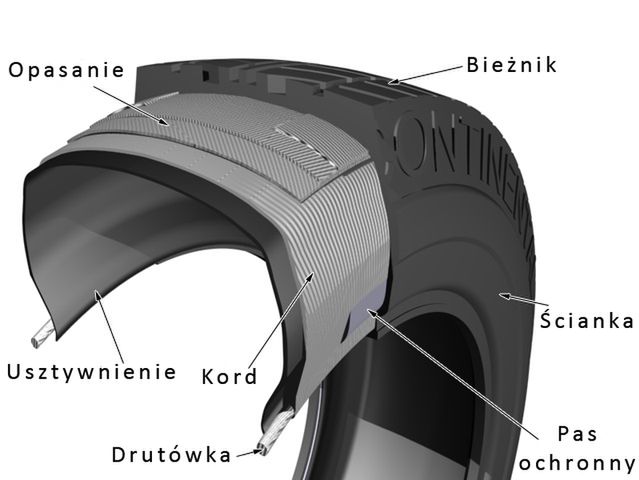
Also, a car out of alignment could signal other mechanical problems that may affect tire performance. For the best results, choose a shop that uses accurate computer-assisted machines, and ask for a printout of the adjustment angles to keep with your service records.
 Free rolling axle tires are crossed and installed to the drive axle, while the drive axle tires are brought straight to the free rolling axle (without crossing). Just remember, “cross to drive”.
Free rolling axle tires are crossed and installed to the drive axle, while the drive axle tires are brought straight to the free rolling axle (without crossing). Just remember, “cross to drive”.

 Keep the guide handy for reference.
Keep the guide handy for reference. If there is none and the tires are non-directional, you can still choose to rotate them front to rear. That means taking the left front to the left rear and the left rear to the left front. Follow the same pattern on the right side.
If there is none and the tires are non-directional, you can still choose to rotate them front to rear. That means taking the left front to the left rear and the left rear to the left front. Follow the same pattern on the right side.
 Campbell spent over 15 years as both a manager and an under-car specialist in the automotive repair industry. Prior to that, he managed two different restaurants for over 15 years. Campbell began his professional writing career in 2004 with the publication of his first book.
Campbell spent over 15 years as both a manager and an under-car specialist in the automotive repair industry. Prior to that, he managed two different restaurants for over 15 years. Campbell began his professional writing career in 2004 with the publication of his first book.  Keep the manual handy for your reference.
Keep the manual handy for your reference.  If it's not there and the tires are non-directional, you can still turn them from front to back. That means left front left rear and left rear left front. Follow the same pattern on the right side.
If it's not there and the tires are non-directional, you can still turn them from front to back. That means left front left rear and left rear left front. Follow the same pattern on the right side. 




 Tire pressure maintains the shape of the tire. Insufficient pressure or improper installation will accelerate tire wear and put additional stress on the tire carcass. Excessively high pressure can cause tire wear at the center of the tire tread and increase the likelihood of cracks in the tire tread.
Tire pressure maintains the shape of the tire. Insufficient pressure or improper installation will accelerate tire wear and put additional stress on the tire carcass. Excessively high pressure can cause tire wear at the center of the tire tread and increase the likelihood of cracks in the tire tread.  The pressure may also drop if the nipple does not fit or is worn out.
The pressure may also drop if the nipple does not fit or is worn out.  The increase can be even greater when using a bias ply tire; therefore do not change the nominal dimensions of the tires.
The increase can be even greater when using a bias ply tire; therefore do not change the nominal dimensions of the tires.  The main advantage of a tubeless tire is that, although it can be pierced by a nail, it cannot experience a sudden drop in pressure. However, if the driver is unaware of the tire damage and continues to drive, the damage may increase and cause a hazard.
The main advantage of a tubeless tire is that, although it can be pierced by a nail, it cannot experience a sudden drop in pressure. However, if the driver is unaware of the tire damage and continues to drive, the damage may increase and cause a hazard. 

.jpg)


 Radial ply tires are the right choice for large displacement motorcycles as they must transfer large forces to the road that increase during acceleration, braking and cornering. Radial ply tires have many advantages, the most important of which is the ability to reach high speeds. Due to the centrifugal force, the temperature in the tire increases, which can damage the tire, reduce traction and increase tread wear. The radial design eliminates almost all the disadvantages of bias-ply tires. The behavior of the tire in extreme conditions has become more predictable.
Radial ply tires are the right choice for large displacement motorcycles as they must transfer large forces to the road that increase during acceleration, braking and cornering. Radial ply tires have many advantages, the most important of which is the ability to reach high speeds. Due to the centrifugal force, the temperature in the tire increases, which can damage the tire, reduce traction and increase tread wear. The radial design eliminates almost all the disadvantages of bias-ply tires. The behavior of the tire in extreme conditions has become more predictable. 